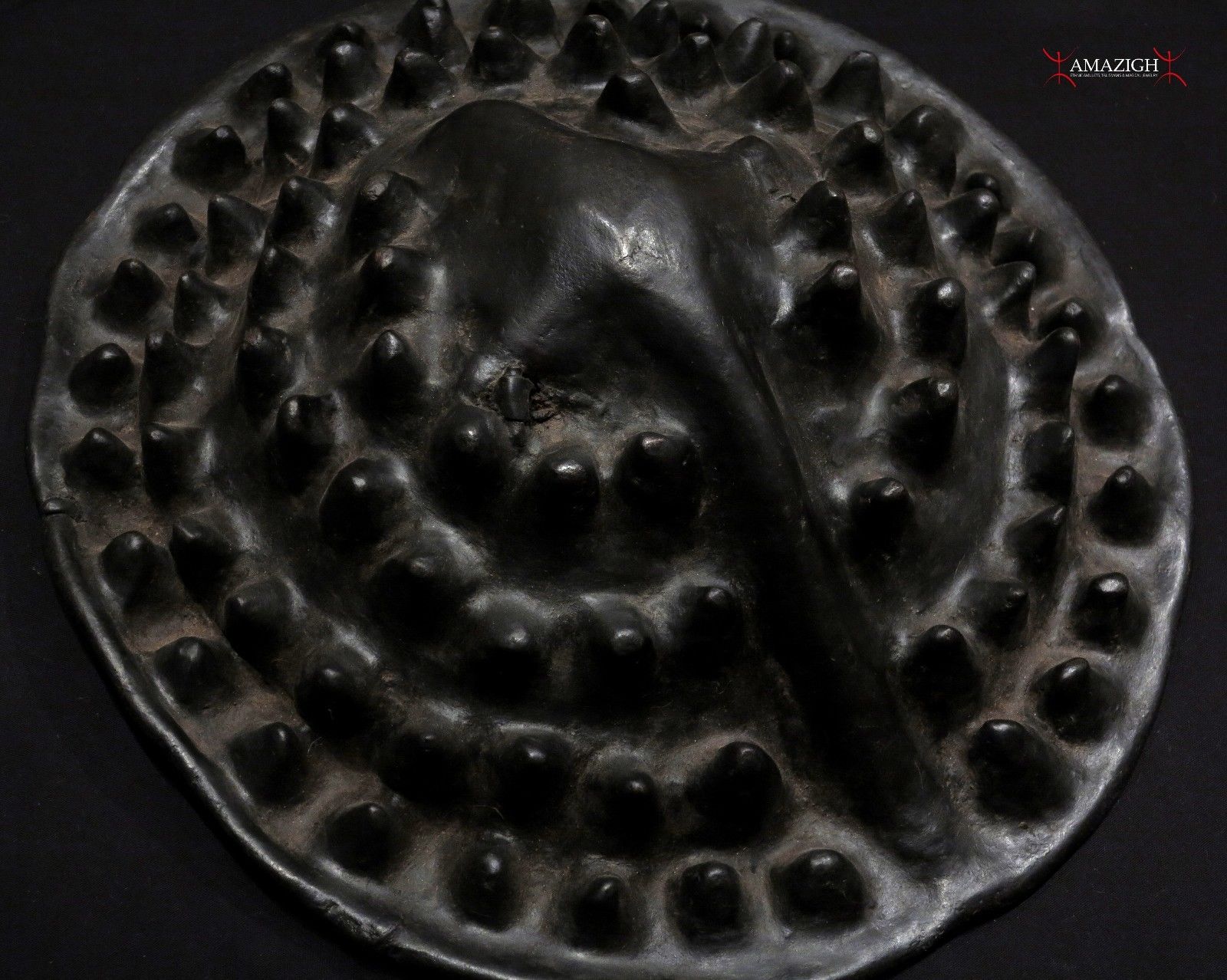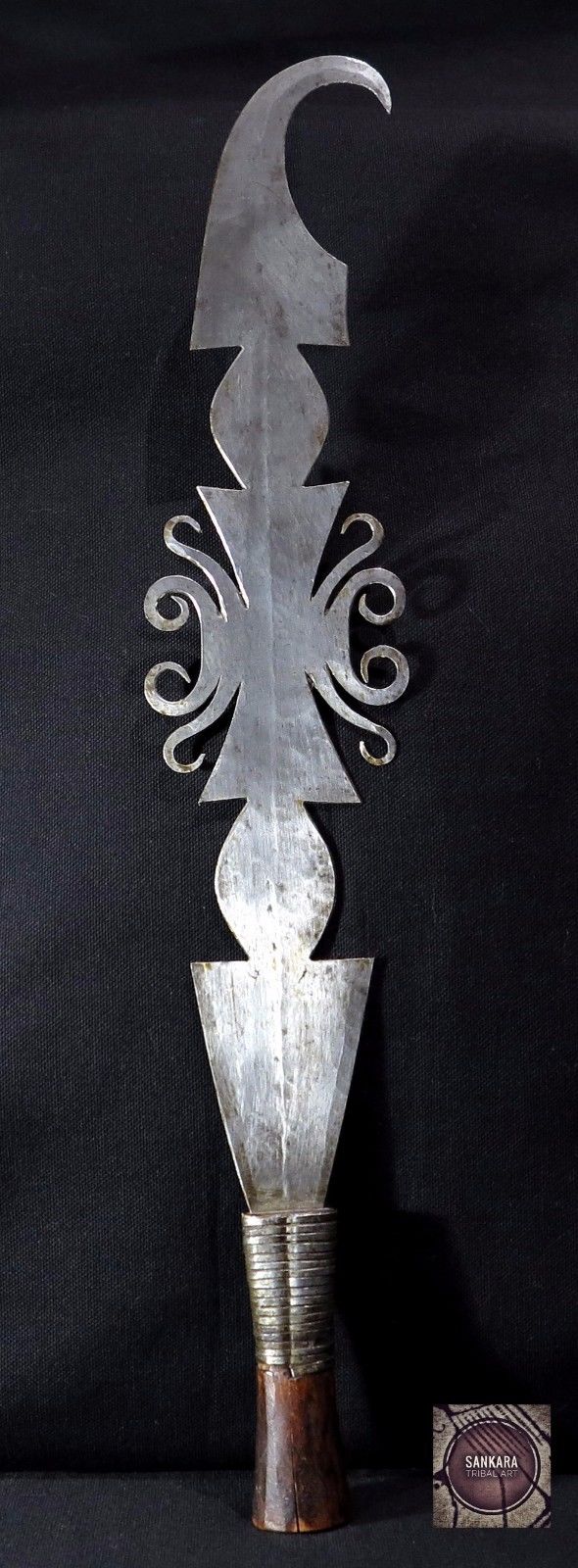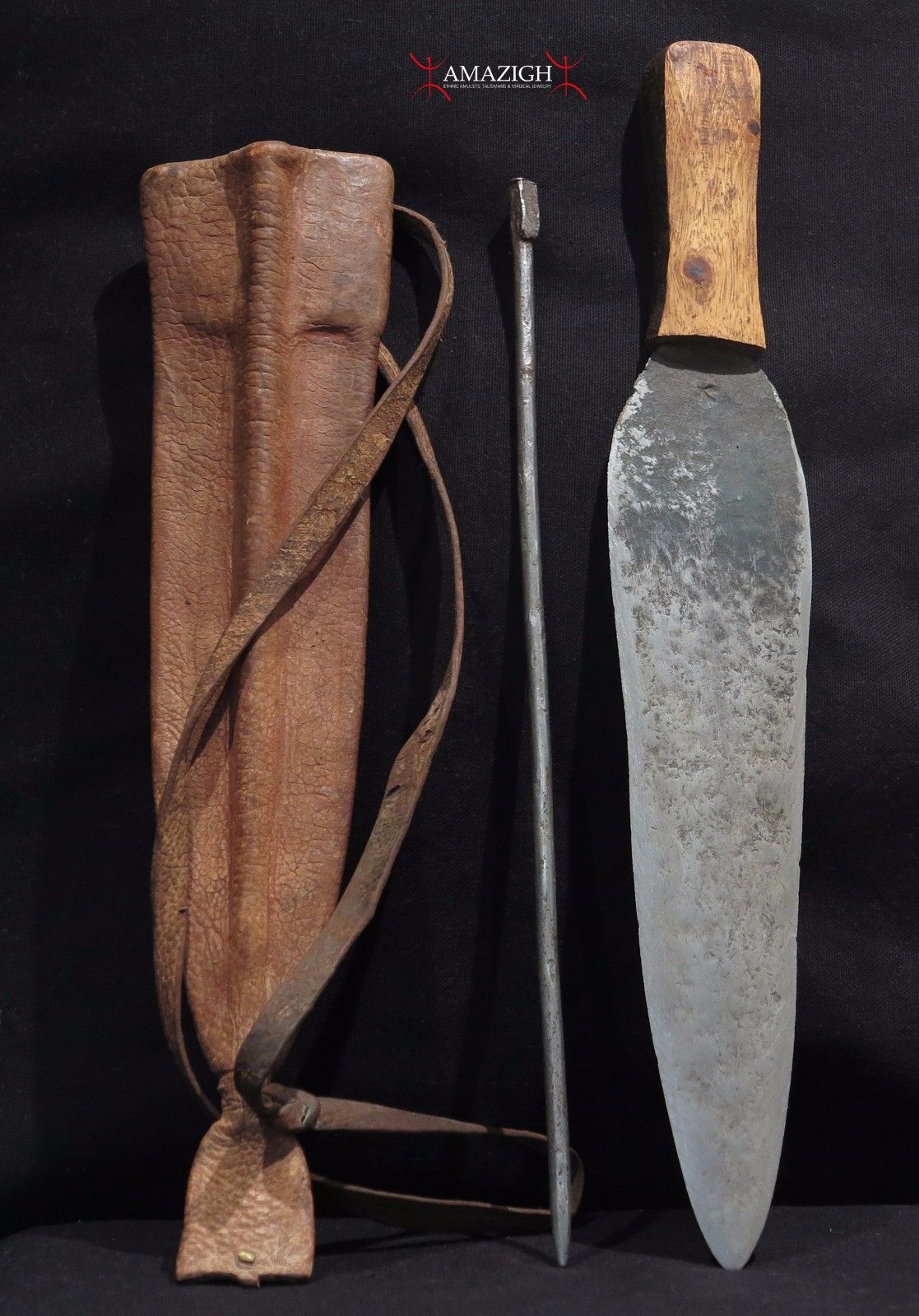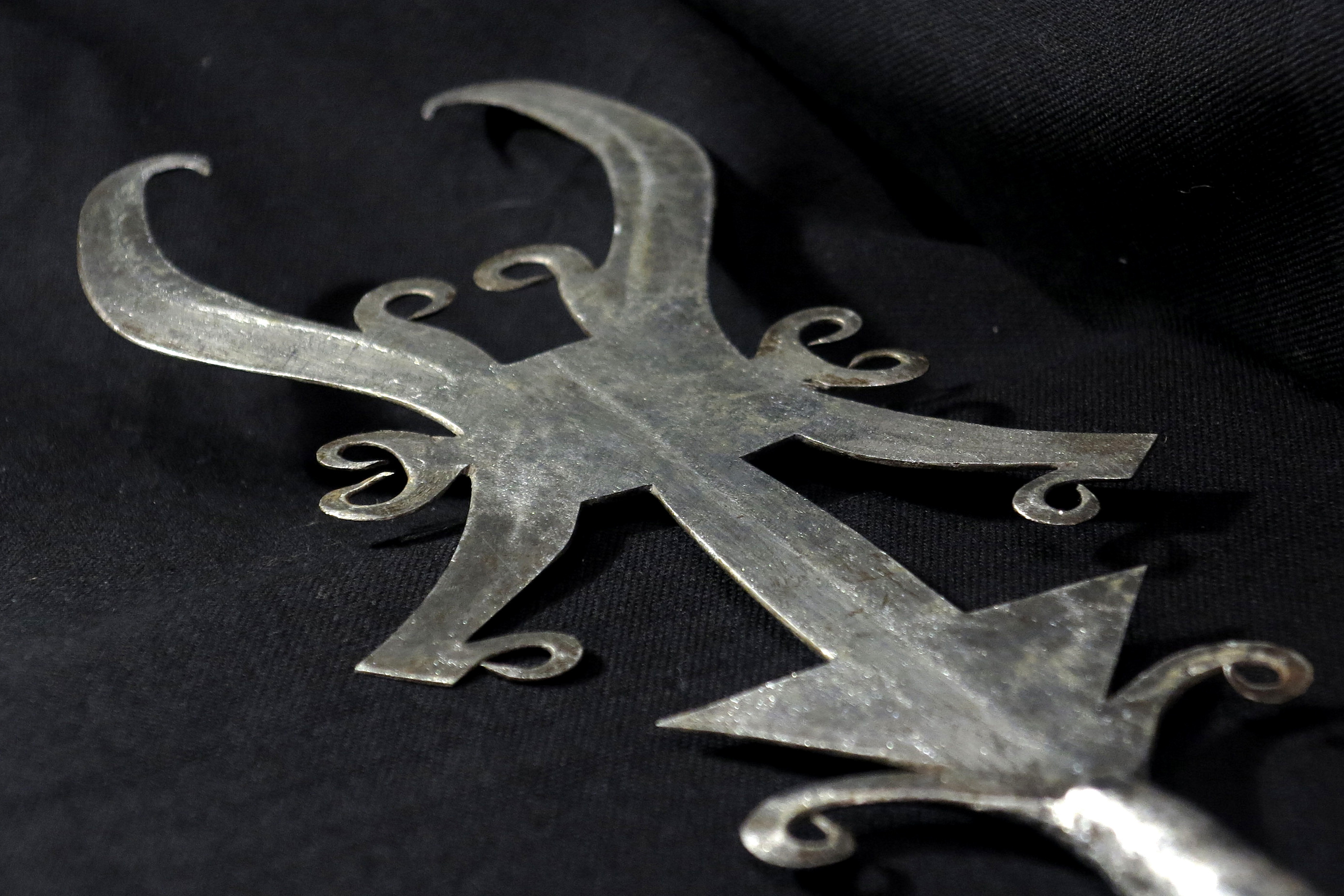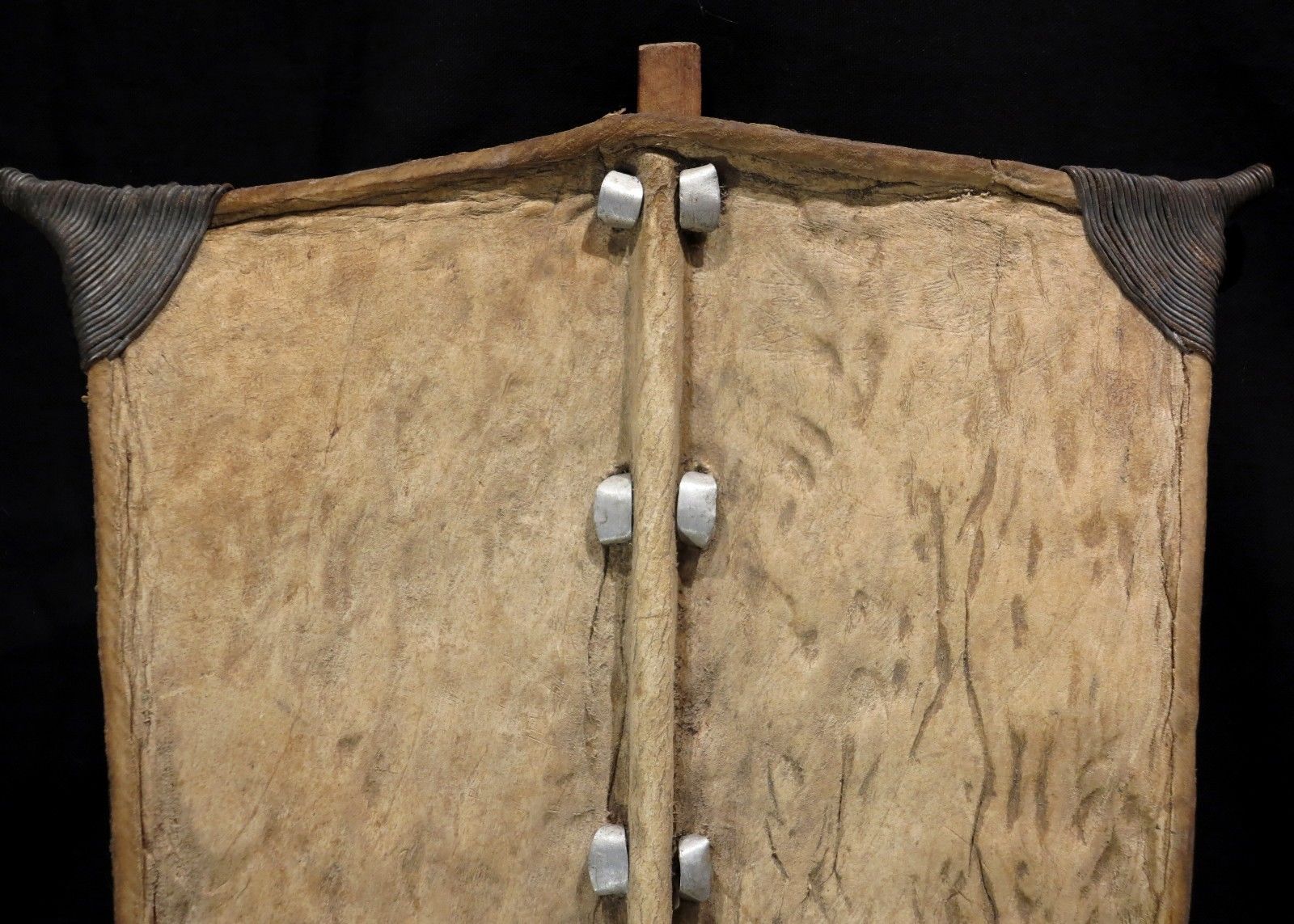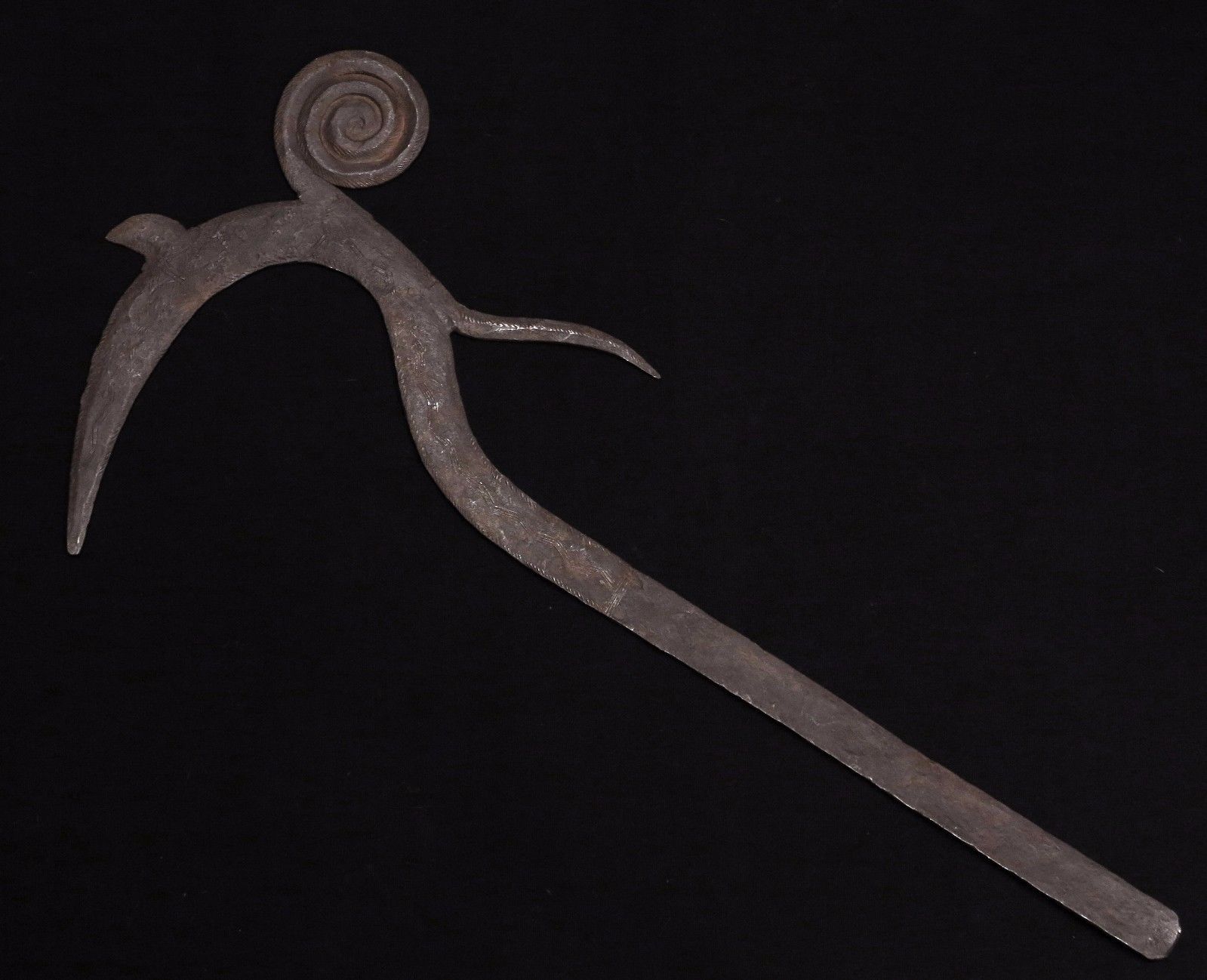Mangbetu Currency Knife – Trombash – DR Congo
Early 20th century. Iron, wood. Cm. 39,0 high (15.35"); weight: grams 548,0 (19.33 oz.). This sickle-shaped knife, although reminiscent of a throwing knife, was not used as a weapon but as a form of currency and as a symbol of rank among the Mangbetu people. The blade is of locally forged iron. It...


